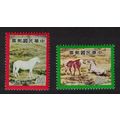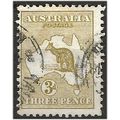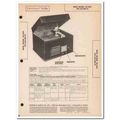Church Stretton, Shropshire - general view - Judges postcard c.1970s
- Condition : Used
- Dispatch : 2 Days
- Brand : None
- ID# : 180569968
- Quantity : 1 item
- Views : 194
- Location : United Kingdom

- Seller : justthebook (+1703)
- Barcode : None
- Start : Wed 08 May 2019 09:30:13 (BST)
- Close : Run Until Sold
- Remain : Run Until Sold
More Listings from This Seller view all
Seller's Description
- Postcard
- Picture / Image: Church Stretton, Shropshire [general view]
- Publisher: Judges (C985)
- Postally used: no
- Stamp: n/a
- Postmark(s): n/a
- Sent to: n/a
- Notes / condition:
Please ask if you need any other information and I will do the best I can to answer.
------------------------------------------------
Postage and packing charge should be showing for your location (contact if not sure).
UK - PayPal, Cheque (from UK bank) or postal order
I will give a full refund if you are not fully satisfied with the postcard.
----------------------------------------------
Church Stretton is a small town in Shropshire, England, 13 miles (21 km) south of Shrewsbury and 15 miles (24 km) north of Ludlow. The population in 2011 was 4,671.[1]
The town was nicknamed Little Switzerland in the late-Victorian and Edwardian period because of its landscape and became a health resort.[2] The local geology includes some of the oldest rocks in England and a notable fault is named after the town.[3]
Today, Church Stretton is a busy market town in the Shropshire Hills Area of Outstanding Natural Beauty.
People have lived in the Stretton Gap (or Dale) for thousands of years; an Iron Age hillfort on Caer Caradoc[4] overlooks the town. The name "Stretton" is derived from the Old English words stræt meaning "Roman road" and tun meaning "settlement";[5]a Roman road, Watling Street runs through the Stretton Gap, though the town (and adjacent settlements) were not historically located on this road – during the "Dark Ages" the settlements grew a short distance away from the old thoroughfare, for defensive purposes. Today the modern A49 road, which was constructed on its current alignment through the Stretton Gap in the late 1930s, runs along a similar course to the Roman Road. The Roman road was historically known as Botte Street.[6]
The settlements of Little Stretton, Church Stretton and All Stretton (until the late 19th century regarded as separate townships) formed the manor of Stretton or Stretton-en-le-Dale.[6] The Domesday Book of 1086 recorded 35 households and a mill in the manor.[7] Church Stretton became the largest of the settlements, with the manor's parish church and market located there, and being where Bristol Road had a junction with the road to Much Wenlock and the Burway - a route over the Long Mynd. At the time of the Domesday Book, the manor came under the hundred of Culvestan, a Saxon hundred that was amalgamated during the reign of Henry I — the Strettons then came within the upper division of the hundred of Munslow.[8]
The town was first granted a market charter by King John in 1214, for a weekly market on Wednesdays, but by 1253 the market day had changed to Tuesdays. In 1337 a new charter was granted by Edward III and it authorised a weekly market to be held on Thursdays.[9] The market is still held every Thursday, in the square on the High Street, which has been the town's market place since the 13th century.[9] Much of the town was destroyed by fire in 1593[10] and many of the present half timberedbuildings in the town centre date from the time of the rebuilding.[10]
The High Street was for many centuries known instead as the Bristol Road, being the road from Shrewsbury to Bristol. It was once a much wider street within the town, with the churchyard of St Laurence bordering directly onto the street. Over time buildings were erected on the street, in a similar fashion to other English market towns, such as in Ludlow. The High Street, which is a narrow street, is effectively only the eastern side of the original Bristol Road thoroughfare through the town. It was made more open when the old market hall was demolished to form the present town square.[11]
Historically the town was known for its textiles, using the abundant local wool, and a notable location for this industry was Carding Mill Valley (grid reference SO442945). The carding mill there was built in the 18th century, and named after a stage in making cloth, the three stages being carding, spinning and weaving. Carding would have been done by children, and involved using a hand-card that removed and untangled short fibres from the mass of raw material. The cards were wooden blocks with handles and covered in metal spikes, which were angled (to make it easier to untangle) and set in leather. When untangled, the material would be spun, and then woven into the final product.
The carding mill closed and was demolished at the beginning of the 20th century, though the adjacent factory building remains in the valley today. The valley it is in took the name "Carding Mill Valley", and is now a tourist attraction and well-known starting location for walkers (being at the heart of the Long Mynd range). It is owned (along with the entire hill range) by the National Trust, who have a visitor centre there. The mill building itself has been converted into flats and a number of other private houses exist near it and the visitor centre, forming a small settlement in the valley. Vehicles (and therefore most visitors) have to drive up from the town, from Shrewsbury Road, to access the valley.
Cars may drive as far as the car park situated about a mile up the valley. This car park was at one time an open-air swimming pool. A sign indicating water depth still stands in its original position.
Listing Information
| Listing Type | Gallery Listing |
| Listing ID# | 180569968 |
| Start Time | Wed 08 May 2019 09:30:13 (BST) |
| Close Time | Run Until Sold |
| Starting Bid | Fixed Price (no bidding) |
| Item Condition | Used |
| Bids | 0 |
| Views | 194 |
| Dispatch Time | 2 Days |
| Quantity | 1 |
| Location | United Kingdom |
| Auto Extend | No |



 for 1 item(s)
for 1 item(s)

















